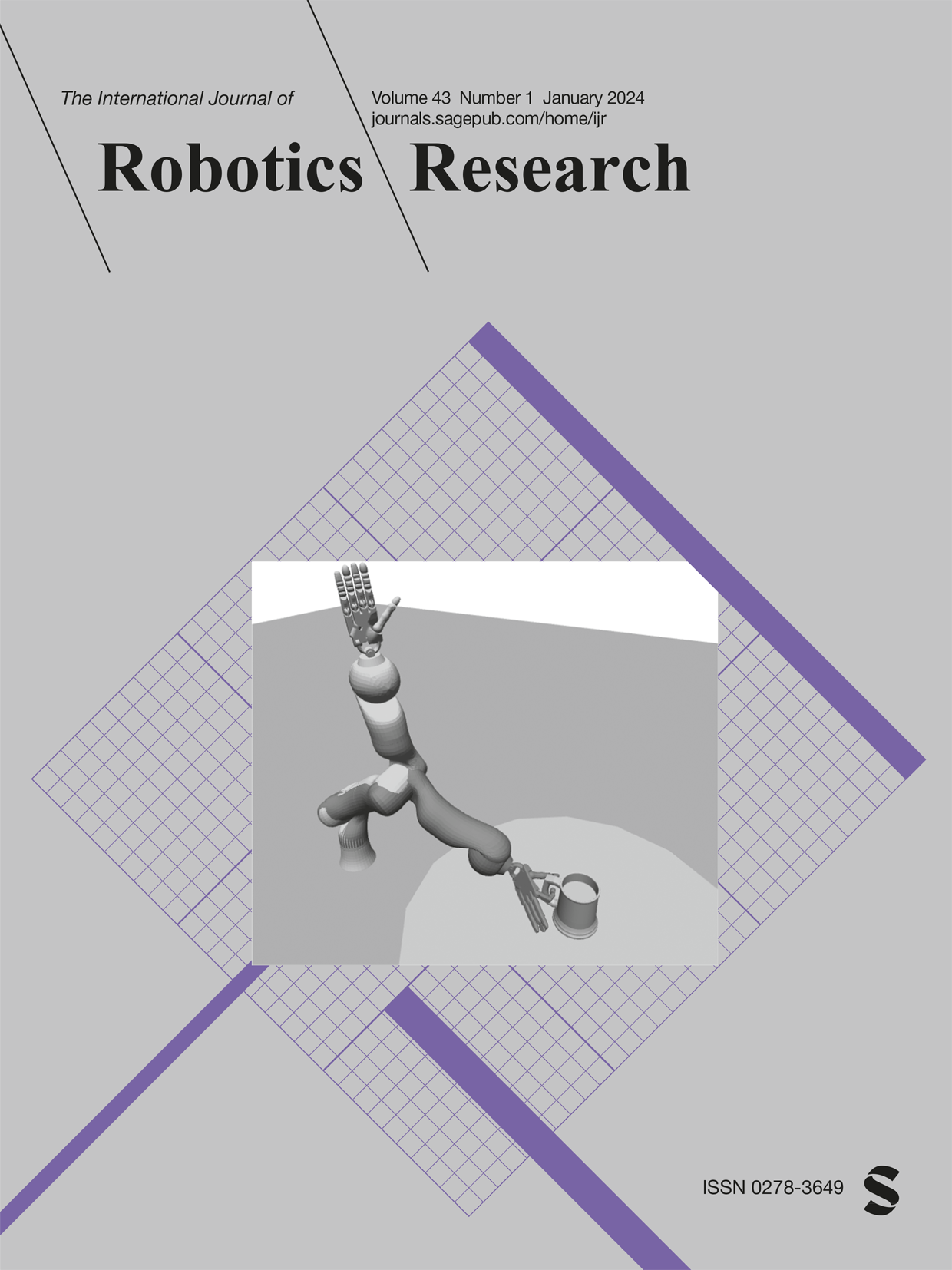Enabling impedance-based physical human–multi–robot collaboration: Experiments with four torque-controlled manipulators
IF 5
1区 计算机科学
Q1 ROBOTICS
引用次数: 10
Abstract
Robotics research into multi-robot systems so far has concentrated on implementing intelligent swarm behavior and contact-less human interaction. Studies of haptic or physical human-robot interaction, by contrast, have primarily focused on the assistance offered by a single robot. Consequently, our understanding of the physical interaction and the implicit communication through contact forces between a human and a team of multiple collaborative robots is limited. We here introduce the term Physical Human Multi-Robot Collaboration (PHMRC) to describe this more complex situation, which we consider highly relevant in future service robotics. The scenario discussed in this article covers multiple manipulators in close proximity and coupled through physical contacts. We represent this set of robots as fingers of an up-scaled agile robot hand. This perspective enables us to employ model-based grasping theory to deal with multi-contact situations. Our torque-control approach integrates dexterous multi-manipulator grasping skills, optimization of contact forces, compensation of object dynamics, and advanced impedance regulation into a coherent compliant control scheme. For this to achieve, we contribute fundamental theoretical improvements. Finally, experiments with up to four collaborative KUKA LWR IV+ manipulators performed both in simulation and real world validate the model-based control approach. As a side effect, we notice that our multi-manipulator control framework applies identically to multi-legged systems, and we execute it also on the quadruped ANYmal subject to non-coplanar contacts and human interaction.实现基于阻抗的物理人-多机器人协作:四个扭矩控制机械手的实验
到目前为止,机器人对多机器人系统的研究主要集中在实现智能群体行为和无接触人机交互。相比之下,对触觉或物理人机交互的研究主要集中在单个机器人提供的帮助上。因此,我们对人类和多个协作机器人团队之间通过接触力进行的物理互动和隐含交流的理解是有限的。我们在这里引入了物理人多机器人协作(PHMRC)一词来描述这种更复杂的情况,我们认为这在未来的服务机器人中非常重要。本文中讨论的场景涵盖了通过物理接触紧密连接的多个操纵器。我们将这组机器人表示为放大的敏捷机械手的手指。这种观点使我们能够使用基于模型的抓取理论来处理多接触情况。我们的扭矩控制方法将灵巧的多机械手抓取技能、接触力的优化、物体动力学的补偿和先进的阻抗调节集成到一个连贯的柔顺控制方案中。为了实现这一点,我们贡献了基本的理论改进。最后,在模拟和现实世界中对多达四个合作的KUKA LWR IV+机械手进行的实验验证了基于模型的控制方法。作为副作用,我们注意到我们的多机械手控制框架同样适用于多足系统,我们也在非共面接触和人类互动的四足动物ANYmal上执行它。
本文章由计算机程序翻译,如有差异,请以英文原文为准。
求助全文
约1分钟内获得全文
求助全文
来源期刊
CiteScore
22.20
自引率
0.00%
发文量
34
审稿时长
6-12 weeks
期刊介绍:
The International Journal of Robotics Research (IJRR) has been a leading peer-reviewed publication in the field for over two decades. It holds the distinction of being the first scholarly journal dedicated to robotics research.
IJRR presents cutting-edge and thought-provoking original research papers, articles, and reviews that delve into groundbreaking trends, technical advancements, and theoretical developments in robotics. Renowned scholars and practitioners contribute to its content, offering their expertise and insights. This journal covers a wide range of topics, going beyond narrow technical advancements to encompass various aspects of robotics.
The primary aim of IJRR is to publish work that has lasting value for the scientific and technological advancement of the field. Only original, robust, and practical research that can serve as a foundation for further progress is considered for publication. The focus is on producing content that will remain valuable and relevant over time.
In summary, IJRR stands as a prestigious publication that drives innovation and knowledge in robotics research.

 求助内容:
求助内容: 应助结果提醒方式:
应助结果提醒方式:


